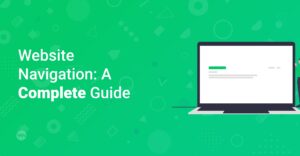Preface
Are you ready to showcase your work and skills to the world? A professional portfolio is your golden ticket, and with Elementor’s free widgets, building one is easier than you think. Whether you’re a designer, writer, developer, or any other creative professional, this guide will walk you through creating a stunning portfolio using Elementor, even if you’re on a budget. Let’s dive in and transform your online presence!
Why Use Elementor for Your Portfolio?
Elementor is a popular drag-and-drop page builder for WordPress, known for its ease of use and flexibility. The free version offers a range of widgets that are perfect for creating a professional portfolio. Here’s why you should consider Elementor:
- Ease of Use: With its intuitive drag-and-drop interface, Elementor is beginner-friendly and requires no coding knowledge.
- Customization: Elementor provides extensive customization options, allowing you to create a unique and personalized portfolio.
- Responsive Design: Ensure your portfolio looks great on all devices with Elementor’s responsive design features.
- Free Version: The free version of Elementor offers plenty of widgets to get you started without spending a dime. You can get even more features if you upgrade to Elementor Pro.
Hint: Before starting, make sure you have WordPress installed and Elementor activated. If you need some help installing WordPress plugins check out this guide.
Key Free Elementor Widgets for Your Portfolio
Here are some essential free Elementor widgets you can use to build a compelling portfolio:
- Image Widget: Display your work with high-quality images.
- Text Editor Widget: Add descriptions and details about your projects.
- Heading Widget: Create clear and engaging section titles.
- Video Widget: Showcase video projects or testimonials.
- Button Widget: Add clear call-to-action buttons, such as ‘View Project’ or ‘Contact Me.’
- Icon Widget: Use icons to highlight your skills and services.
- Image Gallery Widget: Create a visually appealing gallery of your best work.
- Divider Widget: Separate sections and improve readability.
- Spacer Widget: Add whitespace to balance your design.
Step-by-Step Guide: Building Your Portfolio with Elementor
Let’s walk through the process of creating a professional portfolio using Elementor’s free widgets.
1. Setting Up Your Portfolio Page
- Create a New Page: In your WordPress dashboard, go to Pages > Add New. Name your page ‘Portfolio’ or any other relevant title.
- Edit with Elementor: Click the ‘Edit with Elementor’ button to open the Elementor editor.
- Choose a Structure: Start with a blank canvas or select a pre-designed template (some free templates are available). A blank canvas gives you full control over your design.
2. Adding a Hero Section
The hero section is the first thing visitors see, so it should be eye-catching and informative.
- Add a Section: Click the ‘+’ icon to add a new section. Choose a one-column layout for a simple design.
- Background Image: Set a background image that represents your work or brand. Go to Style > Background > Background Type > Classic and upload an image.
- Heading Widget: Drag a Heading widget into the section. Add your name and profession (e.g., ‘John Doe – Web Designer’). Customize the font, size, and color in the Style tab.
- Text Editor Widget: Add a brief introduction or tagline using the Text Editor widget. Keep it concise and engaging.
- Button Widget: Include a call-to-action button, such as ‘View My Work’ or ‘Contact Me.’ Link the button to your portfolio section or contact page.
John Doe - Web Designer
Passionate web designer with 5+ years of experience creating stunning websites.
View My Work
3. Showcasing Your Projects
This is the most critical part of your portfolio. Use the Image Gallery, Image, and Text Editor widgets to display your projects effectively.
- Add a New Section: Create a new section with a suitable layout (e.g., three columns for displaying multiple projects).
- Heading Widget: Add a Heading widget with the title ‘My Projects’ or ‘Featured Work.’
- Image Widget: Drag an Image widget into each column. Upload an image of each project.
- Text Editor Widget: Add a description of each project below the image. Include details about your role, the technologies used, and the results achieved.
- Button Widget: Add a ‘View Project’ button below each description, linking to a detailed case study or the live project.
4. Highlighting Your Skills
Use the Icon and Text Editor widgets to highlight your key skills and expertise.
- Add a New Section: Create a new section with a two-column layout.
- Heading Widget: Add a Heading widget with the title ‘My Skills.’
- Icon Widget: Drag an Icon widget into the first column. Choose an icon that represents a skill (e.g., a code icon for programming skills).
- Text Editor Widget: Add a description of your skill next to the icon. Be specific about your proficiency level.
- Repeat: Repeat steps 3 and 4 for each skill you want to highlight.
5. Adding Testimonials
Testimonials can add credibility to your portfolio. Use the Text Editor widget to display quotes from satisfied clients.
- Add a New Section: Create a new section with a one-column layout.
- Heading Widget: Add a Heading widget with the title ‘Testimonials’ or ‘What Clients Say.’
- Text Editor Widget: Drag a Text Editor widget into the section. Add a quote from a client, along with their name and company.
- Style: Use the Style tab to format the testimonial. Consider using a blockquote style to make it stand out.
6. Contact Information
Make it easy for visitors to contact you by including your contact information.
- Add a New Section: Create a new section with a two-column layout.
- Heading Widget: Add a Heading widget with the title ‘Contact Me.’
- Text Editor Widget: Add your email address, phone number, and social media links.
- Form Widget (Optional): If you want to include a contact form, consider using a free contact form plugin like Contact Form 7 and integrating it with Elementor using a shortcode.
Enhancing Your Portfolio with Design Tips
Here are some design tips to make your portfolio stand out:
- Use High-Quality Images: Use clear, high-resolution images of your work. Optimize images for the web to improve page loading speed.
- Maintain Consistency: Use a consistent color scheme, typography, and layout throughout your portfolio.
- Whitespace: Use whitespace to balance your design and improve readability.
- Call to Action: Include clear call-to-action buttons to encourage visitors to take the next step (e.g., ‘View Project,’ ‘Contact Me’).
- Mobile-Friendly: Ensure your portfolio is responsive and looks great on all devices. Elementor makes it easy to adjust your design for different screen sizes.
- Typography: Chose nice fonts. The article how to choose the right fonts for your website will guide you through choosing.
Info: Elementor offers various customization options to adjust fonts, colors, and spacing to match your brand. You can even save your designs as templates for future use.
Optimizing Your Portfolio for SEO
To attract more visitors to your portfolio, optimize it for search engines.
- Keywords: Use relevant keywords in your page title, headings, and descriptions. Research keywords related to your industry and skills.
- Meta Descriptions: Write compelling meta descriptions for each page to encourage clicks from search engine results pages (SERPs).
- Alt Text: Add descriptive alt text to all images. This helps search engines understand the content of your images and improves accessibility.
- URL Structure: Use a clean and descriptive URL structure (e.g., yourdomain.com/portfolio).
- Page Speed: Optimize your portfolio for speed to improve user experience and search engine rankings. Use image optimization plugins and caching to improve loading times. This quickstart SEO guide can provide you a lot of useful information.
Examples of Great Portfolios Built with Elementor
To inspire you, here are some examples of professional portfolios built with Elementor:
- Laura Belgray: A copywriting portfolio with a clean and minimalist design (https://laurabelgray.com/)
- Adham Dannaway: A graphic design portfolio showcasing a range of creative projects (https://adhamdannaway.com/)
- Femke van Schoonhoven: A web design portfolio with a focus on user experience (https://www.femke.co/)
You can also get inspired by looking at this list of beautiful websites built with elementor. It will blow your mind.
Conclusion
Creating a professional portfolio with Elementor’s free widgets is an achievable goal for anyone looking to showcase their work online. By following this guide, you can build a stunning portfolio that attracts potential clients and employers. Remember to focus on high-quality images, clear descriptions, and a user-friendly design. Start building your portfolio today and take your online presence to the next level!



